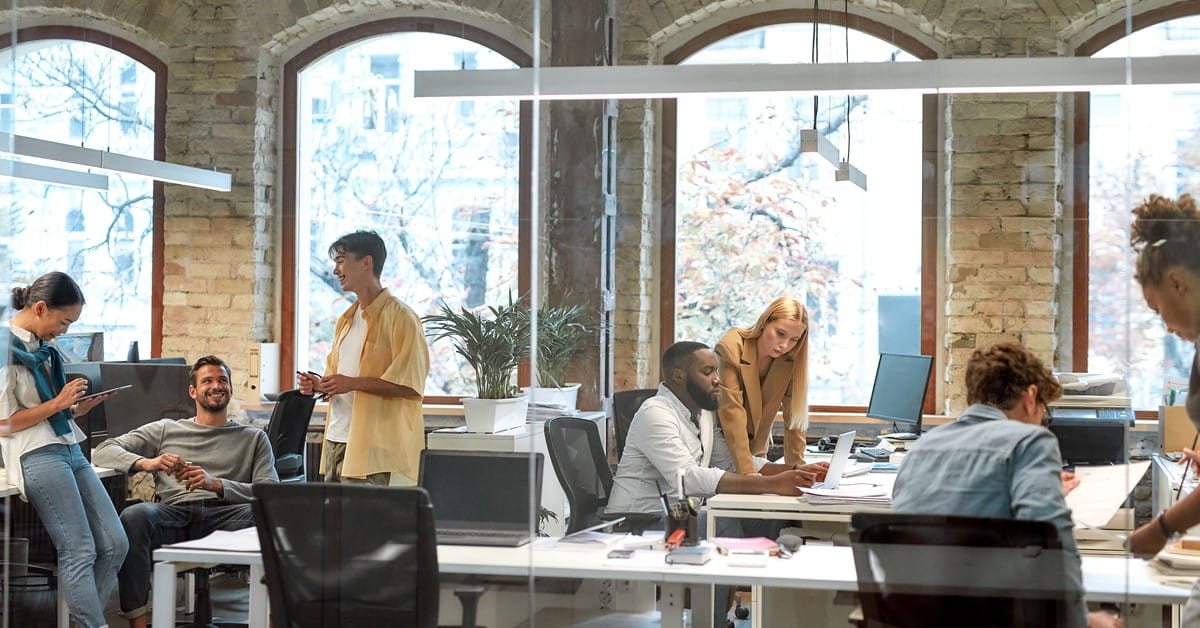
Positive mental wellbeing in the hybrid workplace

The way we work has fundamentally changed, inviting us to reinvent how we operate and explore new methods to create value, culture and promote positive mental wellbeing in the hybrid workplace. In Australia, recent studies have demonstrated that 60 percent of employees would choose to blend their working time between the office and home, proving that there’s great merit in organisations addressing this common preference.
Hybrid working models can contribute to a range of benefits, including increased productivity levels. However, such change will also come with a set of challenges relating to workplace mental health and wellbeing which leaders must acknowledge as they manage this new working landscape.
Many employees are now hesitant to go back into the workplace because of their health and safety as well as a general decline in confidence after having worked virtually for so many months. For some, it feels like starting over and having to adapt to the new way of communicating can lead to staff feeling overwhelmed and apprehensive.
So, the big question is - how do you build positive workplace wellbeing and resilience so staff feel confident both with going back into the office and working from home?
We’ve talked with workplace wellbeing expert Dr Debra Villar to find out how mental health can be considered in your hybrid workplace. Dr Villar oversees and develops evidence-based corporate wellbeing programs to help companies thrive.
Dr Villar highlights that employees will be experiencing a vast and varying mix of emotions as many may be looking forward to seeing their colleagues and getting out more, while also feeling concerned about how this may affect work-life balance and their health. Read on as Dr Villar shares her insights on the importance of addressing mental health challenges so you can ensure your organisation flourishes with the emergence of the hybrid workplace model.
The mental health challenges of hybrid working and how to overcome them
There are numerous mutual benefits that come from allowing employees to work from home including decreased staff turnover. This can also have positive effects on well-being as staff may have a greater sense of autonomy, improved work-life balance and less time spent commuting which can all lead to heightened satisfaction.
However, the fluctuation of working both in-office and at home can be a challenging climate for some employers and employees to navigate. Dr Villar says recent studies suggest that “many feel like the WFH model suits a more stable work-life balance but other research shows the opposite, with many feeling burntout when working from home.” Dr Villar also warns that hesitancy to return to the physical workplace may arise from fears of exposure to COVID-19 “which can be a tricky territory to navigate for employees.”
Isolation and loneliness
Research has shown that almost half of all Australians feel lonely at least once a week. After many months of separation, it’s important for organisations to foster an environment of togetherness and this doesn’t have to be limited to the physical workplace. Connection is crucial and trying to engage people as much as possible goes a long way in creating a sense of community for your organisation.
“Humans are social beings and need human connection,” says Dr Villar. “Working in a physical environment will support collaboration and friendships between colleagues which can be essential for conflict resolution, creativity and innovation.”
Things like team socialising events that involve light-hearted and informal interaction are very constructive actions. For example, trivia sessions can help connect those working from home together with those in the office.
Burn out
Living and working in the same space can sometimes make it difficult for some people to maintain a healthy work-life balance. Leaders of organisations must ensure that their teams are taking the time to switch off at the end of each day to relax and unwind.
It’s helpful to have clear, distinct work hours and non-work hours communicated to employees to encourage them to unplug at the end of the day. This kind of workplace compassion should also be extended to the in-office employees, ensuring that they are not staying back late after office hours.
Dr Villar stresses the importance of looking for signs of burnout and mental health problems of employees, noting that, “symptoms can include the employees withdrawing, a change in their behaviour, or absent more often. It is important to have teams properly trained in mental health first aid in order to be able to quickly recognise and support employees that are struggling.” Equipping all staff with the resources they need to operate better and improve their mental state is a key measure that leaders should take.
Poor communication leading to poor trust
Communication is at the heart of any successful organisation. Frequent communication with staff is important to assess how they are feeling and how to support them through the hybrid working journey.
Communication can also encourage connectivity and engagement. Dr Villar believes that “bringing people together for the social aspect of wellbeing plays a big role in bridging any gaps in the team network and provides staff with a better level of comfort.”
Regular team check-ins are also incredibly valuable for organisational leaders, ensuring that the staff pulse is felt and understood. This is also useful in finding areas for improvement. Active communication with employees helps to uphold a company’s culture while valuing the sentiments of individual employees. This has positive flow-on effects in helping teams do what they do, but better.
Educating staff on the importance of mental health and wellbeing is as essential as good communication and initiatives like health and wellbeing programs are highly useful. As Dr Villar states, this “is not a ‘nice to have’ but a ‘must have’ program.”
Concern around working in the office post-covid
The physical office space can have a huge impact on positively shaping the working environment. Office spaces should also be intuitive and leaders should consider allowing employees the ability to choose what days they come in. This will empower people rather than force them. With the deployment of useful tech like desk booking systems, collaboration tools and software, communication platforms, online learning applications and programs, and staff satisfaction surveys, organisations can help reshape the working landscape for the better.
Dr Villar believes that the success of the hybrid workplace implementation lies in the organisation’s capacity to actively listen to staff and work alongside them to create the optimal working environment.
“It’s crucial to communicate and collaborate on how to best navigate the return to the workplace with the employees, this will build confidence, knowing that the leaders of the organisation are caring for the health and wellbeing of their people,” says Dr Villar.
With an effective arrangement that blends work structures with flexibility and autonomy, the overall wellbeing and mental health of employees will improve. Ensuring that managers and leaders are consistently checking in with their staff helps to empower a culture where people feel that they can speak up if they are experiencing poor mental health and have confidence that their place of work will support them.
The pandemic has been a trying time for most people, but we now have the opportunity of a lifetime to learn from it and come up with new ways to create the ultimate working environment to positively impact the mental health and wellbeing of the community. Learn more about what it takes to successfully embrace the future of work.
If you or someone else is struggling with their mental health, there is help available:
Beyond Blue: 1800 512 348 or chat online at
https://www.beyondblue.org.au/
Lifeline: 13 11 14




